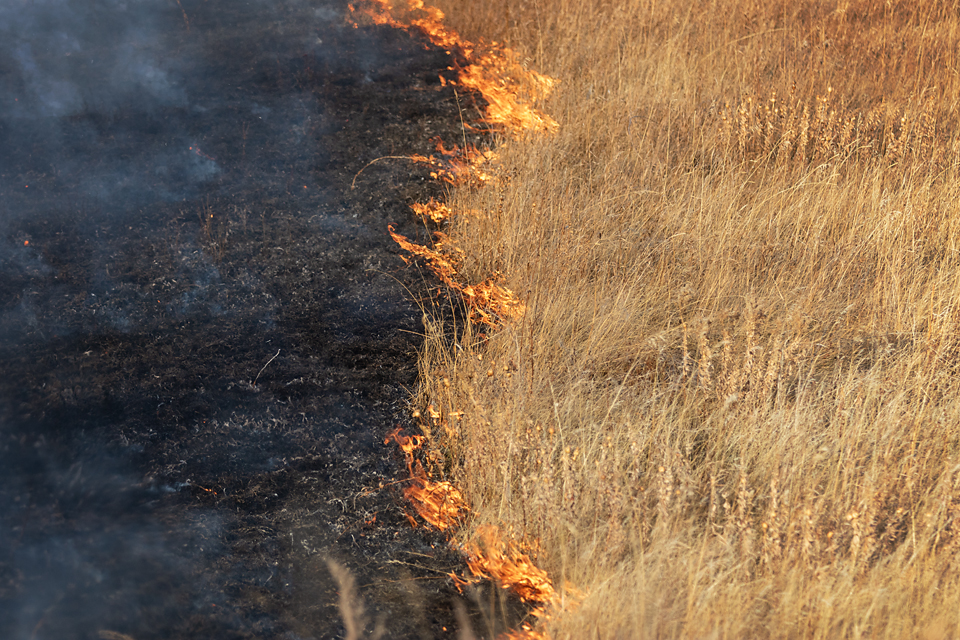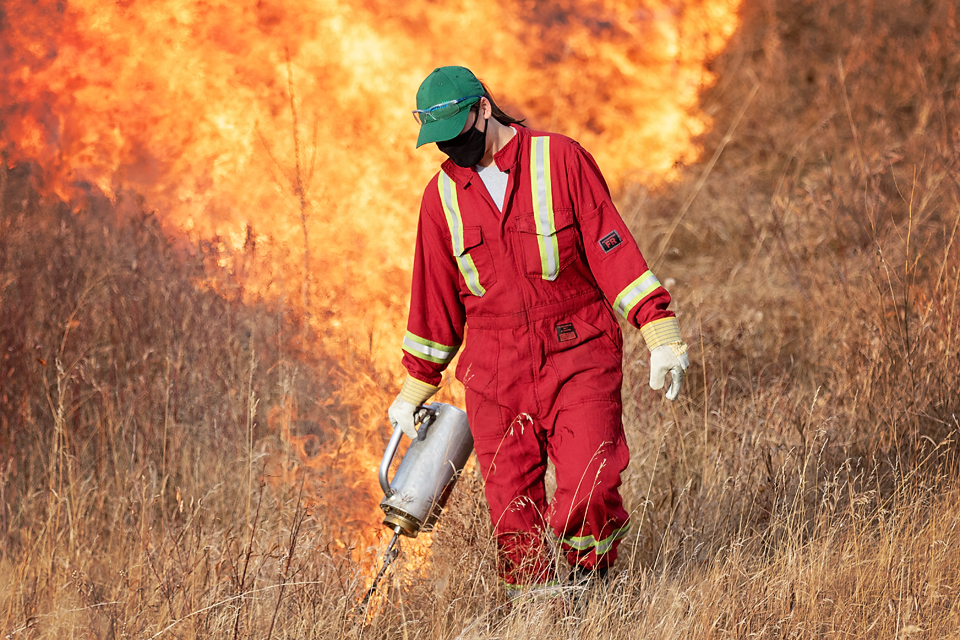Grazing and Fire Ecology
How grazers interact with fire at a landscape scale, and the consequences of those interactions for grassland diversity and ecosystem function. Much of this work is focused on the use of prescribed fire for conservation purposes.

Plant-Soil Interactions
How plant-soil feedbacks can structure plant performance and plant community diversity. Currently we are investigating how plant species richness influences soil microbial diversity and function, and in an agronomic context, how individual plant traits can structure soil rhizosphere diversity.
Conservation Biology
Saskatchewan has many rare species and landscapes. More than seventy of grasslands have been converted to agriculture, with conversion of some grassland types greater than 95%. This antropogenic impact has left many conservation challenges. My group works on both landscape level conservation and the conservation of individual species.
Our landscale level conservation work is focused on the reintroduction of prescribed fire as a tool to manage conservation grasslands. I work closely in partnership with the Nature Conservency of Canada and Meewasin Valley Authority on this project. We are currently working to promote the safe use of prescribed fire for grassland conservation. Our most significant accomplishment thus far has been the reintroduction of prescribed fire to the Old Man on His Back Conservation area in south-west Saskatchewan. This project and two of the graduate students involved is highlighted in the CBC Nature of Things documentary Grasslands.

Individual species work includes studies of the distribution and abundance of the Athabasca endemic flora, a unique concentration of sand-dune adapted species in northern Saskatchewan, and the Dakota Skipper, an at risk butterfly in south-east Saskatchewan.
Restoration Ecology
Large areas of Saskatchewan rangelands have been planted to non-native grasses, some of which can become weedy or invasive in neighbouring native grassland. Many native species may be suitable alternatives in seeded pastures and prairie restoration projects. We have worked with Agriculture and Agrifood Canada to develop practical multispecies mixes of native species. Our goal is to use competition theory and knowledge of species traits to identify combinations of species identity, richness, and evenness with both high levels of facilitation and resistance to drought condition.
Tundra restoration is challenging because of the slow growth rates of plants in tundra environments and the lack of native seed sources for Arctic restoration work. We work in collaboration with Katherine Stewart to develop and improve restoration techniques for use in the Arctic.
Statistical Ecology
Plant community ecology is statistically intensive. We strive to remain current on developments in statistical ecology, and when needed make contributions to the field. Topics that we work on include: improved indices to summarize complex ecological data, methods to bring spatial information into ecologically realistic emipirical models, and the quantification of the prevalence rates of very rare traits from molecular screening data

